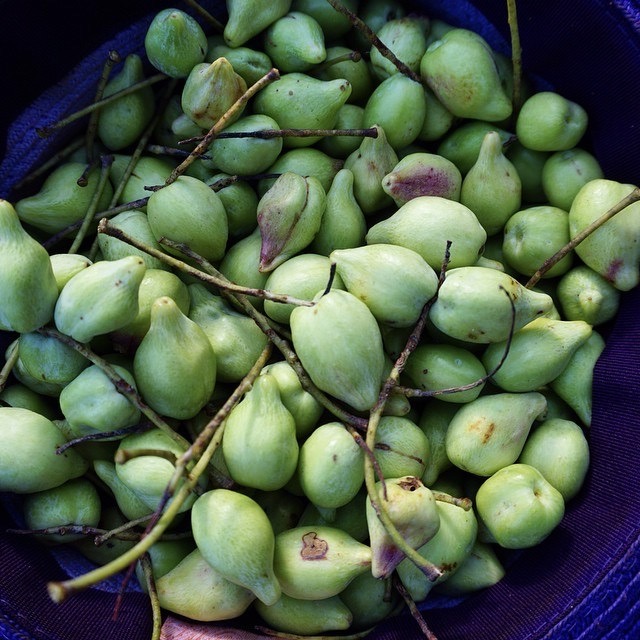
In 2023, the world of nutrition and food will continue to evolve and change. With an increasing focus on health and wellness, many people are looking for ways to incorporate more nutrient-dense foods into their diets. At the same time, the food industry is constantly introducing new products and trends that may influence what people choose to eat. Some of the key trends that may shape the nutrition and food landscape in 2023 include a focus on plant-based diets, sustainable and locally sourced ingredients, Australian native foods and functional ingredients that offer specific health benefits. Here are some of the hottest food trends for 2023.
REGENIVORE
Regenivore is a new term for 2023. There is increasing awareness among consumers about the environmental impact of the food industry and a growing demand for sustainable and eco-friendly food options. Regenivore is a term that refers to a person who is focused on consuming food that is produced in a way that actively promotes the regeneration of the environment. This can include choosing food that is produced using methods that reduce carbon emissions, improve soil health, that are organic, support the welfare of animals, and produced using environmentally responsible practices. It may also involve considering the social and economic impacts of food production, including the treatment of the people who grow and process the food. Regenivores also look to support companies that prioritise sustainability in their operations, such as using renewable energy sources, conserving water, and reducing waste. It can also involve supporting local and small-scale food producers, as they are often more closely connected to the land and the communities in which they operate.
AUSTRALIAN NATIVE INGREDIENTS
One trend that seems to be gaining traction is the use of Native Australian ingredients in cooking, as more people are seeking out unique and exotic flavours. Native Australian ingredients have gained popularity in recent years and have been incorporated into a variety of dishes in both traditional and modern contexts. Here are some examples of native Australian ingredients that you will be seeing more of in 2023.
- Lemon myrtle: Lemon myrtle is a plant native to Australia that is known for its strong, lemon-like aroma and flavour. Lemon myrtle has a strong, citrusy aroma and a distinctive lemon-like flavour that is often described as being sweeter and more complex than lemon. Lemon myrtle is a popular ingredient in a variety of dishes, including desserts, beverages, and savory dishes. It is often used to add a citrusy flavour to baked goods, such as cakes and cookies, and sauces, marinades, and rubs for meat and seafood, or a natural alternative to lemon zest or extract. Lemon myrtle is also used to flavour tea and other beverages and can be used to add a refreshing, citrusy twist to cocktails. Native Australian Aborigines have used lemon myrtle (also known as Backhousia citriodora) as a traditional medicinal plant for centuries. The leaves of the lemon myrtle plant have been used to treat a variety of ailments, including colds, flu, and other respiratory conditions. Lemon myrtle has also been used as a natural remedy for digestive issues, such as indigestion and bloating, and as a natural insect repellent. You will find this beautiful native Australian botanical in our award winning Bodhi Organic ZesTEA.
- Quandong: Quandong, also known as ‘wild peach’ or Santalum acuminatum, is a small, red fruit that is native to Australia and has a sweet, sour taste. Ripe sweet Quandong is eaten fresh, or can be dried for future use. It is often used in jams, jellies, chutneys and desserts. Quandong is high in antioxidants and contains twice the vitamin C content of an orange, and has been used in traditional Australian medicine for centuries. Quandong is rich in antioxidants, including flavonoids and tannins, which may help reduce inflammation in the body. It’s also a valuable vegetarian source of iron and zinc. Some studies have found that quandong extract has antibacterial effects, which may make it useful in fighting infections. Quandong is often used in skincare products due to its high antioxidant content and potential to improve skin health. It may help reduce the appearance of fine lines and wrinkles, and may also have a protective effect against sun damage. Some research suggests that quandong may have potential as a natural treatment for diabetes. It may help lower blood sugar levels and improve insulin sensitivity.
- Kakadu plums: The Kakadu plum, also known as billy goat plum or green plum, is a fruit that has been wild harvested by Australian aboriginal people for tens of thousands of years. These small, sour plums are one of the world’s richest sources of vitamin C which is beneficial for boosting immune health and helping fight off infections. Kakadu plum boasts 100 times more vitamin C than an orange. Traditionally Australian aboriginals would use the leaves and inner bark from the Kakadu plum tree as a bush tea to relax and help the digestive system, and the whole fruit with the seeds were consumed to help fight off colds. Kakadu plums and are often used in drinks, sauces and jams, and the freeze dried powder can be added to smoothies.
- Native pepper berries: These small, dark berries have a spicy, slightly sweet flavour and are often used as a seasoning. Both the leaves and berries can be dried and used as a cooking spice, and when milled, the hardened berries make for a terrific substitute for conventional pepper. Indigenous Australians use whole peppercorns or crush the spice into a paste, and apply the pepper to toothaches or sore gums. Due to its super high antioxidant content, 4 times that of blueberries, native pepper berries are used for a variety of illnesses such as stomach aches and skin disorders. The berry has been found to inhibit the growth of many pathogenic bacteria, and can inhibit the growth of food poisoning bacteria and prevent food spoilage. The leaves can also be brewed as a bush tea.
- Bush tomatoes: These small, red fruit have a tangy flavour and are often used in sauces, relishes, and seasonings. Of the 6 known edible bush tomatoes, Kutjera ‘Desert Raisins’ are the most well known and most consumed bush tomato. They have been a staple food of Indigenous Australians of Central Australia for many thousands of years. They are a rich source of minerals, particularly potassium, and contain high levels of vitamin C. The fruits are sun-dried so they can be eaten all year round.
- Wattleseed: Watleseed has been a mainstay of the Indigenous Australian diet for over 40,000 years. These nutritious seeds were traditionally ground into a flour and baked as a damper, which made a valuable source of protein and carbohydrates for Aboriginal people. Wattleseed is very rich in protein, potassium, calcium, iron and zinc. It has a low glycemic index so it is beneficial for people with diabetes, or to help maintain healthy blood sugar levels. Ground wattleseed has a nutty, roasted coffee aroma, with a touch of sweet spice so it can be dried and roasted just like coffee and used as a coffee substitute. It is also used to add flavour to baked goods and desserts, or as a thickening agent in sauces and casseroles.
YUZU
Yuzu, known as the ‘Japanese lemon’ has hit the hot list for 2023. Yuzu is a citrus fruit that is native to East Asia and is commonly used in Japanese cuisine. It has a distinctive, tart flavour that is often described as a combination of lemon, mandarin, and grapefruit. Yuzu is most commonly used in Japan to make yuzu kosho, a condiment made from yuzu zest, chili peppers, and salt. It is also used to make ponzu sauce, a citrus-based sauce that is commonly used as a condiment in Japanese cuisine. Yuzu is also used in marinades, and dressings. You will see yuzu turning up more in a variety of dishes this year, including desserts, sauces, and cocktails. Yuzu is generally available in specialty stores or online and can be found in the form of yuzu juice, yuzu zest, or yuzu paste.
Yuzu is a great source of vitamin C, which is important for supporting the immune system. A study published in the journal “Food Science and Technology Research” found that yuzu juice had a cholesterol-lowering effect and may have potential as a functional food for preventing hypercholesterolemia (high cholesterol). Yuzu is rich in antioxidants, which may help to protect the skin from damage caused by environmental factors. It may also help to moisturize and soften the skin. A study published in the “Journal of the Science of Food and Agriculture” found that yuzu peel extract had a protective effect on skin cells and may have potential as a natural skin care ingredient.
SEA VEGETABLES
Sea vegetables like wakame, kelp and sea creatures like uni have popped up on trend lists for 2023. Seaweed is a highly nutritious and sustainable food source. Seaweed is a good source of protein and fiber and is rich in variety of vitamins and minerals such as vitamin K, vitamin B, zinc, iron and protective antioxidants, which have been linked to a number of health benefits. Seaweed is especially high in iodine, which is essential for healthy thyroid function. Seaweed also contains compounds that may have anti-inflammatory effects, as well as helping balance blood sugar levels. Consuming seaweed can also help promote gut health by enhancing the growth of beneficial gut microbiota. It is a good source of fiber, which can help improve digestion and promote healthy bowel movements. Research suggests that including seaweed in the diet can also help reduce cholesterol levels and protect against heart disease.
Seaweed can be used in a variety of dishes, including soups, salads, and sushi. It has also been used as a seasoning or as a wrap for other ingredients. There are many different types of edible seaweed including nori, dulse, wakame, kelp, arame which can be consumed in a variety of forms, including fresh, dried, or as a powder or extract. Uni, also known as sea urchin roe, is the edible reproductive organs of certain species of sea urchins. It is considered a delicacy in many parts of the world and is often served as a topping for sushi or sashimi. Uni has a creamy, slightly sweet and salty flavour and a soft, buttery texture.
PLANT-BASED DIET
Plant-based eating will remain a popular trend this year, with more people looking for ways to incorporate more vegetables, grains, and legumes into their diets. Plant-based diets consist of a variety of whole grains, legumes, fruits, and vegetables, and typically exclude animal products like meat and dairy. These diets are often rich in essential nutrients like vitamins, minerals, and fiber, and are low in saturated fats.
Eating more plants is one of the best things you can do for your health. The benefits of eating plant-based foods have long been known. Evidence shows that eating a wholesome plant-based diet can reduce your risk of weight gain and chronic disease. Plant-based diets are protective against type-2 diabetes, certain cancers, cardiovascular disease and obesity.
Plant-based foods including fruits, vegetables, legumes, nuts, seeds and wholegrains are rich in dietary fibre, healthy unsaturated fats, and protective antioxidants. Fruit and vegetables are loaded with important phytochemicals such as flavonoids, carotenoids and isothiocyanates that have potent antioxidant and anti-inflammatory actions that help protect our cells from oxidative damage. Inflammation is said to be the root of almost all diseases. Excessive red meat and processed meat consumption can promote inflammation in the body.
Raw nuts and seeds (including their pastes and oils), avocadoes and extra virgin olive oil (EVOO) contain beneficial unsaturated fats including omega-3 essential fatty acids and vitamin E, that have an anti-inflammatory action and help support cardiovascular health. A study found that people who consume at least 3 servings of nuts per week have a 39% lower risk of premature death.
Adopting a plant-based diet can have numerous benefits, not only for personal health but also for the environment. Many people choose to follow a plant-based diet in order to reduce their carbon footprint and support sustainable food systems.
UBE
Ube, also known as purple yam, is a tuberous root vegetable that is an indigenous staple of the Philippines. Ube has a vibrant purple flesh and texture similar to potato when cooked. They have a sweet, nutty flavour and vanilla-scent, and can be used in a variety of sweet and savoury dishes. Ube is used in traditional dishes such as ube halaya, a sweet, creamy dessert made from boiled and mashed ube and coconut milk.
Ube is gaining popularity as a natural source of colour and flavour in a variety of dishes. You will see ube showing up in a variety of dishes this year including ice cream, beverages, cakes and other baked goods.
Ube is rich in potent antioxidants including anthocyanin, which give them a vibrant colour. Studies have shown that anthocyanins can help lower high blood pressure and reduce inflammation and can offer protection against cancer and type 2 diabetes. Ube is also a great source of potassium and vitamin C.
YAUPON TEA
Yaupon tea, sometimes referred to as ‘America’s native tea’ has a long history of use by Indigenous peoples in Southeastern United States. Yaupon tea has gained attention due to its health benefits and unique flavour. Yaupon tea, made from the leaves of the Yaupon holly plant, has a slightly bitter and astringent flavour. This tea contains caffeine and is said to help improve energy and digestion and assist with weight loss.
CANNED FISH
Look out for more recipes this year using canned anchovies and sardines including pizza, pasta dishes, and fish tacos. Canned fish are gaining popularity due to their convenience, sustainability, and nutritional value. Canned fish can be a sustainable choice due to the way it is produced and the fact that it has a long shelf life. Canned fish is generally caught using sustainable fishing practices and is processed and canned shortly after being caught, which helps to preserve its quality and taste. In addition, canned fish has a long shelf life and can be stored for extended periods of time, which reduces food waste and helps to conserve resources. In addition, the production of canned fish can have a lower carbon footprint compared to other types of protein, such as beef or pork. This is because the production of canned fish requires fewer resources, such as water and land, and generates fewer greenhouse gas emissions.
Anchovies and sardines are rich in beneficial omega-3 essential fatty acids which are vital for healthy immune and brain function, and cardiovascular and skin health. They’re also an excellent source of protein, zinc and iron. Research shows that canned anchovies and sardines have lower levels of heavy metals, such as mercury, compared to canned tuna. This is due to anchovies and sardines being smaller, shorter-lived fish that are lower in the food chain.
You should always choose wild and sustainably sourced tinned fish when you can. Wild fish are generally caught using sustainable fishing practices, which can help to preserve fish populations and protect marine ecosystems. Wild fish are generally considered to be more nutritious than farmed fish due to their natural diet and living conditions. The production of wild fish may have a lower environmental impact compared to farmed fish, as it requires fewer resources and generates fewer greenhouse gas emissions.
KOJI
Koji is the new favourite on the fermentation scene, as consumers continue to seek out new flavoursome functional foods that aid gut health. Koji is a Japanese seasoning that is made by fermenting rice, barley, or soybeans, with the help of a fungus called Aspergillus oryzae. The resulting koji is rich in enzymes that can help to break down proteins, making it useful in the production of fermented foods.
It is the starter base for miso, sake, and soy sauce, and is an essential staple in Japan. The result of this type of fermentation brings up gorgeous umami flavours that can elevate any meal. Koji is known for its ability to add a rich, savory flavour to foods and is often used to enhance the flavour of dishes such as soups, stews, and marinades. You will see more umami flavours popping up in 2023 in sauces, snack foods, and even chocolate, desserts and beverages including cocktails.
Many people are attracted to koji for its health benefits, as it is a rich source of enzymes that can aid in digestion, and beneficial probiotics which can help to support a healthy gut microbiome.
Written by Lisa Guy, naturopath and founder of Bodhi Organic Tea.







